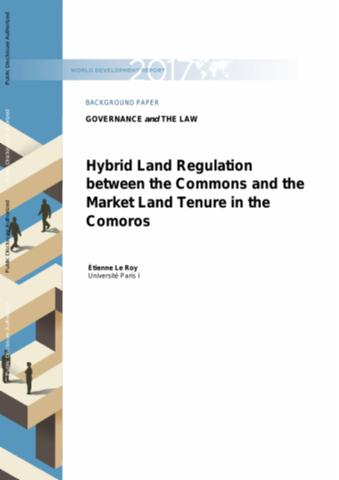Farm-level data integration: future problems and consequences for public and private structures
One of the outcomes of the EC-FP7 project “Future Farm” was showing the need ofINTEGRATION, something that PROGIS has been doing for 15 years. Within the whole sectoragriculture–forestry-environment-risk management there is an enormous need for integrationthat is not available yet, because of on side the existing admin-sector-structures plus on theother side diverse public and/or private interests with opposite directions and in many cases thenot streamlined interest of ALL involved parties. On the other hand we have the nature that isfully integrated and should be managed by us!
Subdividing the Commons: The Politics of Property Rights Transformation in Kenya’s Maasailand
This paper discusses the internal processes and decisions that characterized thetransition from collectively held group ranches to individualized property systems amongthe Maasai pastoralists of Kajiado district in Kenya. It addresses the question of whygroup ranch members would demand individualized property systems, but then turnagainst the outcome. In addressing this puzzle the paper discusses the process of landallocation and distribution during group ranch subdivision.
Supreme Court of India Judgment on Village Common Land in Case of Jagpal Singh & Ors vrs. State of Punjab & Ors. (Civil Appeal No.1132 /2011 @ SLP(C) No.3109/ 2011
This is a judgment of Supreme Court of India to check grabbing of village common land including ponds and water bodies (called in different names) by unscrupulous persons, political clout, powerful vested interests, corrupt state authorities, etc by fraudulent practices and ensure their protection and safeguard.
The Odisha Special Survey and Settlement Act, 2012
An Act to deal with undertaking survey and settlement operations in the State by adopting modern technology to minimize the time span without compromising the quality, transparency and grievance redressal and related matters.
Hybrid Land Regulation between the Commons and the Market Land Tenure in the Comoros
Following a chaotic political decolonization, from 1975 to 2000, the Comoros failed to sustain the extension of private land ownership pursued since the beginning of the twentieth century and to implement land reform prepared with the assistance of the FAO and the UNDP but abandoned after the assassination of the President of the Republic in 1989. This reform was based on a form of heritage management recognizing the plural and complementary nature of modes of securing land tenure.
A Commons Story
The study is an attempt to bring to the fore a Commons perspective of agriculture,livestock and rural livelihoods in the dryland and tribal areas of India. Would agriculture, livestock and rural livelihoods sustain in the absence of the support provided by Commons.
In finding an answer to this, This explores the potential role of the Commons (land and water resources) in strengthening the viability of the agro‐pastoral production systems and the resilience of household livelihoods.
Vegetation Analysis of Protected Common Lands
The study looks into the work of two organizations- the Foundation for Ecological Security (FES) and BAIF Research Foundation, towards Common Land Developmentin the two States of Rajasthan and Madhya Pradesh.
India’s Forest and Common Lands
A major gap in understanding the situation in India with respect to land and its control is the takeover of common lands, which rarely figures in discourses on land. The Society for Promotion of Wastelands Development (SPWD, New Delhi) and RRI commissioned case studies on the takeover of common lands in India in an attempt to fill this gap. This paper is a compilation of those studies. Based on these case studies, an international conference was held in December 2012 to reflect the current situation and discuss possible policy actions.
Enclosing Forests Towards Protection of Habitat
This study analyses the approach of 'enclosing forests' implemented under the Project in Rajasthan which aimed at protecting and regenerating forests and securing long-term access of and benefits to local communities. Forest enclosures established in 13 villages of Udaipur and Baran districts and covering 1289 hectares of forest land represent a collaboration between local communities, the Forest
A diagnostic procedure for applying the social-ecological systems framework in diverse cases
The framework for analyzing sustainability of social-ecological systems (SES) framework of Elinor Ostrom is a multitier collection of concepts and variables that have proven to be relevant for understanding outcomes in diverse SES. The first tier of this framework includes the concepts resource system (RS) and resource units (RU), which are then further characterized through lower tier variables such as clarity of system boundaries and mobility.






